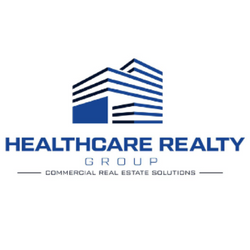Occupancy costs are climbing. Rents are up, construction remains expensive, and healthcare tenants and landlords are both feeling the pressure. These are not short-term trends. They are structural shifts tied to inflation, supply constraints, and steady demand for outpatient medical space.
For landlords, the challenge is protecting long-term value while remaining competitive. For tenants, especially independent practices, rising costs make it harder to plan expansions, negotiate lease renewals, or absorb higher improvement budgets. Both sides are having to make harder decisions, faster, with less margin for error.
As 2026 approaches, the stakes are higher. Planning early and understanding what’s driving these cost increases is essential to staying ahead.
Rent Growth Is Catching Up to Demand
Medical office buildings (MOBs) have seen a surge in demand over the past few years, driven by the aging population, outpatient growth, and shifts in how care is delivered. But while occupancy rates have remained strong—often over 90%—rent increases have followed.
Across many metros, base rents for MOB space are rising 2 to 5 percent year over year. Premium locations and newly built or renovated spaces are commanding even more. With healthcare tenants often signing 7- to 10-year leases, new deals are locking in higher costs for the long term.
This isn’t just a landlord trend. Rising rents reflect real costs tied to property maintenance, taxes, insurance, and utilities—all of which have increased in the post-pandemic economic climate.
For tenants, that makes early lease review essential. Understanding upcoming rent escalations, pass-through expenses, and renewal timelines can offer the chance to renegotiate or relocate before cost increases lock in.
Construction Costs Are Still a Challenge
Even as supply chain pressures ease, construction costs remain a major factor in occupancy pricing. Labor shortages, rising wages, and stubborn material costs are all contributing to higher buildout and tenant improvement (TI) budgets.
Medical spaces often require specialized infrastructure—plumbing for operatories, reinforced HVAC systems, advanced electrical, imaging compliance—and those costs can’t easily be cut. According to multiple real estate reports, healthcare TI costs are averaging between $100 and $150 per square foot for new buildouts, and even higher in coastal or urban markets.
That impacts both landlords and tenants:
- For landlords, higher upfront capital costs often translate to increased rents, longer lease commitments, or requests for cost-sharing.
- For tenants, budgeting for TI in a new lease or expansion can be the difference between moving forward or stalling growth.
Some landlords are offsetting this with blended lease structures or phased buildouts. In high-demand areas, practices that can offer strong financials and long-term commitment are more likely to negotiate favorable TI packages.
New Construction Is Slowing, but Demand Is Not
Developers have pulled back on speculative healthcare builds in many markets. High interest rates, tight construction margins, and cautious lending have cooled the pace of new MOB deliveries. But the demand hasn’t gone away.
Outpatient volumes are projected to rise 10.6% over the next five years. Primary care, behavioral health, and specialty clinics all continue to expand. That means competition for existing space is increasing, and new deliveries are often pre-leased before completion.
In short, there’s a growing mismatch between available space and the healthcare industry’s needs.
This imbalance is contributing to faster lease-up times, reduced concessions, and, in some cases, multiple offers on desirable suites. It’s also driving higher rents for second-generation space, even if it requires renovation.
How Landlords Can Stay Competitive Without Overexposure
Rising costs don’t have to mean lost tenants. Landlords who are proactive about communication, transparency, and long-term value tend to see better outcomes.
Here are a few strategies that work:
- Offer flexibility where possible. Shorter lease terms, phased TI delivery, or graduated rent structures can help tenants manage upfront costs without sacrificing landlord return.
- Invest in efficiency. Smart building upgrades that lower utility costs can offset rising rents and improve tenant satisfaction.
- Know your market. Understand what comparable spaces are offering, how vacancy is trending, and where healthcare demand is growing. Position your asset accordingly.
Most importantly, work with tenants early. Healthcare providers need time to plan. If a lease is expiring in 12 to 18 months, now is the time to start the conversation.
What Tenants Can Do to Plan Ahead
For tenants, navigating rising occupancy costs requires more than watching the market—it requires a clear, forward-looking strategy.
Start with these steps:
- Review your lease now. Understand your expiration date, options for renewal, rent escalations, and TI allowances.
- Know your numbers. If you’re planning to expand, relocate, or open a new site, begin the budgeting process early. Factor in not just rent, but buildout costs, moving expenses, and any downtime.
- Understand your leverage. If your practice is well-established and growing, you may be in a stronger position to negotiate. Use that to your advantage.
- Work with a healthcare-focused advisor. The medical real estate market is unlike any other. Zoning, compliance, and operational needs all affect site viability. A generalist may miss what a healthcare specialist knows to ask.
Looking Ahead: The Cost of Waiting
Rising occupancy costs aren’t likely to reverse anytime soon. Construction timelines remain long. Rent growth is expected to continue. And demand for healthcare space shows no signs of slowing.
That makes early planning a competitive advantage. Whether you’re a property owner or a healthcare provider, the smartest moves in 2025 will come from decisions made now.
If you’re facing a lease decision, planning a new location, or reevaluating your portfolio, Healthcare Realty Group can help you find the right strategy—and the right space—for what’s next.
Contact us to start the conversation.





